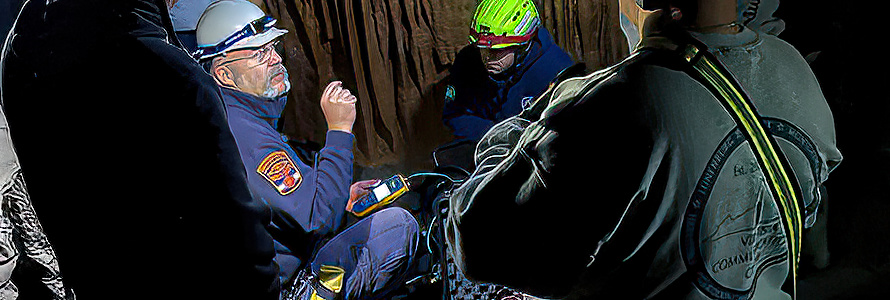The Commonwealth of Virginia boasts a diverse landscape—from mountains to oceans, urban corridors to rural valleys. And with towns ranging in population from a few hundred to a few hundred thousand, collaboration and sharing resources is key for public safety in the state.
The Virginia Communications Cache is one resource for public safety agencies seeking communications support during emergencies or planned events. With five caches strategically located throughout the Commonwealth, responders in Virginia have quick access to equipment, including radios, repeaters, antennas, backup power, and more. These resources can be deployed within two hours for an emergency or requested ahead of a planned event. The Cache has responded to events ranging from festivals to plane crashes to missing persons searches to Virginia Tech sporting events.
Recognizing some of these incidents occur in areas of the state where connectivity is sparse, the Virginia Communications Cache began working with FirstNet to bring cellular capabilities to responders.
Taking FirstNet underground
In December 2022, all five cache teams came together in Rockingham County for an exercise simulating a rescue in a cave. The local Grand Caverns provided an ideal training ground. While the caverns are most often used for commercial tours, there is a deeper portion where explorers can learn more about the cave. If an injury or an emergency were to happen, responders would head thousands of feet underground to rescue victims. In this scenario, they would need communications that can sustain a connection, even deep underground.
While radio communications are challenging in a cave environment, cellular communications are non-existent. “You walk about five feet into this cave and you lose all cellular communications,” said Jim Junkins, Deputy Director of Technology at the Harrisonburg-Rockingham Emergency Communications Center and Program Manager of the Harrisonburg/Rockingham Communications Cache Team.
Junkins and the other cache team members knew they needed to find a way to extend both radio communications and cellular communications into the caverns. “This was our challenge—to provide a land mobile radio where they [responders] could talk, all the way to where the simulated patients were,” he said. The distance was nearly 2000 feet.
The team also wanted to set up a staging area and “mini command post” to provide access to data. Junkins explained, “We wanted to give them capabilities to access the Internet for specialty information or technical people that they want to talk to.”
Using the existing FirstNet coverage in the area, Junkins and his team placed FirstNet MiFis at the mouth of the cave and ran fiber reels over 1,000 feet into the cave. This brought wireless capabilities for computers and cellphones, allowing responders to make phone calls, use apps, and coordinate resources. The teams used push-to-talk apps on FirstNet to communicate via radio channels and streamed video back to the local communications center.
The cache teams completed a similar cave exercise a few years ago, just using land mobile radio technology at the time. Reflecting on the two experiences, Junkins emphasized the difference it made to have FirstNet and broadband capabilities available. “When we were able to sit there—a thousand feet into the cave—and get internet, talk on cell phones, do a virtual meeting, and then simulate consulting command level folks and technical experts—that was just huge,” he said.
Ready for any emergency
For the Virginia Communications Cache, exercises like this one are critical to ensuring they are ready for any scenario. And while the Cache is largely focused on communications via radio, bringing in partners like FirstNet to expand the tools available to responders is important in ensuring they are equipped to respond to any situation.
Additionally, Junkins recognized the additional resources available from FirstNet, for training or during real incidents. Service was readily available outside this cave, but he noted that there are caves in other areas with more limited connectivity. In those instances, FirstNet could support using a deployable to bring responders on-demand coverage to perform rescues and other response operations.
“When first responders get a new tool or new technology, they go out, learn about it, train on it, exercise in unique new ways, and expand their knowledge,” explained Junkins. “FirstNet is very accommodating to that. We can go out, train together. And then we’re ready when we really need it for an emergency.”




















